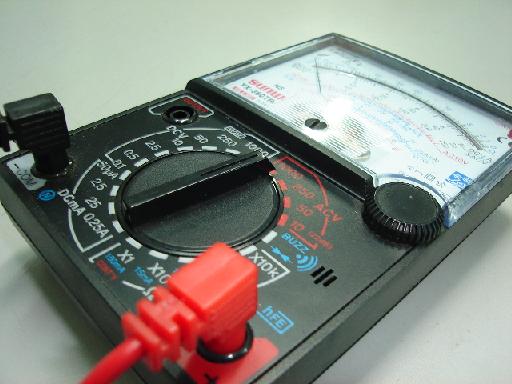Learn Testing Diode Secrets The Easy Way
Fast and Easy Way to Learn All My Testing Electronic Components Secrets!
Click here to see how i test a diode
When comes to testing diode, you need a special method to test it. If you do not know how to accurately check a diode, you will not be able to repair or troubleshoot electronic equipment because a spoilt diode you may think that it is good and you will definitely waste your precious time. Usually a rectifier diode can fail in one of the four ways. Click here to see the preview of the book on more testing secrets! It can become open circuit, short circuit, leaky and breakdown when under full load. Ananalog multimeter or digital multimeter can be used to test or check for all the first three conditions except the last one which is the diode breakdown in full operating voltage. Diode breakdown when under full load means the diode test okay with your meters but failed when a high voltage flow through it. From my experienced in the electronic troubleshooting field, i discovered that testing diode using an analog multimeter is more accurate or precise than using a digital multimeter. I could explain to you in details why i preferred analog meter. I do not know about you because i really came across quite a number of diodes where it tested ok with digital multimeter but failed when check with analog multimeter. The first step on how to test a diode accurately is to remove one of the diode lead. You can't always be certain if a diode is good or bad if you perform in-circuit test, because of back circuits (parallel connection) through other components. To be absolutely sure, you will need to lift, or disconnect, one diode lead from the circuit to avoid back circuits.Unless you are very sure about the board you are checking. Sometimes i do found bad diodes when checking it on board. Your experienced will tell you when to test a diode on-board or off-board. If you are a beginner, i highly suggest that you measure a diode with a lead removed from the board to avoid any confusion results from your meter.
Use Analog Meter To Test Diode If you don't get any reading either forward or reverse bias, the diode is considered open circuit.
The real problem when testing a diode using the diode test function of a digital meter is that an open or leaky
diode, the meter sometimes reads okay (0.6). This is due to the digital meter diode test output voltage (which you can measure the output
test probe using another meter) is around 500mv to 2v. An analog meter set to x1 ohms range have output about 3V(remember the two 1.5V
batteries you installed in the meter!). The 3V voltage is adequate to show you the accurate reading of a diode when under test. If the meter showed one reading then the diode under test is good. If it has two readings then
most probably the diode is either shorted or leaky. The digital meter can't test it because the output from the meter is only about 500mv to 2
volt. Caution: Be certain that power is removed from any circuit before performing any of the following diode checks, otherwise meter or circuit damage could result. Conclusion-In order to correctly testing diode you need to use analog multimeter and set the range to x1 ohm and x10 kilo ohms range. With this tips i'm sure you will have the confident to check any diodes that comes on your way.
|
|
Copyright@ 2006-2014-www.ElectronicRepairGuide.com All Rights Reserved



 Even if you have a good reading at x1 ohms range checking a diode, this doesn't mean that the diode is good . You now have to
select your meter to x10Kohm range to test the diode again. The output voltage of x10k ohms is about 12 Volt (remember the 9 volt
battery in your meter-1.5 volt + 1.5 volt + 9 volt = 12 volt). Again the diode under test should show only one reading. This is exception to
Schottky diode where it have two readings but not shorted reading.
Even if you have a good reading at x1 ohms range checking a diode, this doesn't mean that the diode is good . You now have to
select your meter to x10Kohm range to test the diode again. The output voltage of x10k ohms is about 12 Volt (remember the 9 volt
battery in your meter-1.5 volt + 1.5 volt + 9 volt = 12 volt). Again the diode under test should show only one reading. This is exception to
Schottky diode where it have two readings but not shorted reading.